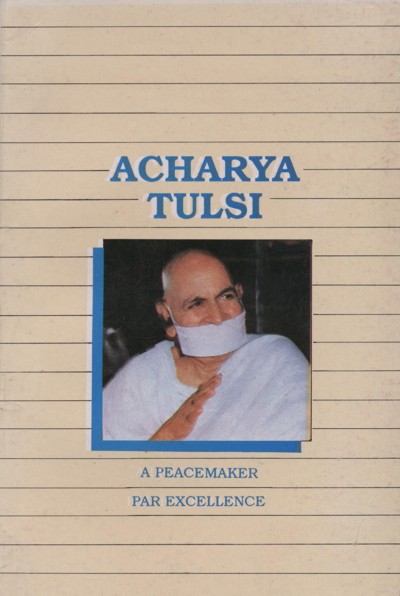Venerable Kalugani, eighth Acharya of Terapanth Dharm Sangh, came to Ladnun in 1925 (Vikram Samvat 1982). The child Tulsi had already completed 11 years then. His visit to Kalugani aroused in him a strong desire to become a Jain monk. In less than a month young Tulsi was initiated into the Terapanth Dharm Sangh at the benign hands of Acharya Kalugani. Though he was young in age, venerable Kalugani visualized in him the seeds of genius, manly courage and great fortune. It was in a sudden and dramatic way that both Guru (master) and Shishya (disciple) were seized with a feeling of oneness. His elder brother Muni Champa Lai had become a monk only a year before. His process of education began under his supervision with the direct patronage of the Acharya himself. He achieved mastery over the Sanskrit language in just seven years. With it began the period of a thorough study of Jain Agamas and Jain philosophy. During this period he performed an astounding feat of memory by learning about twenty thousand Sanskrit slokas by heart. He also began to write poetry in the Rajasthani language, besides having acquired the knack of delivering discourses. Everyone felt fascinated by his melodious voice and accomplished resonance. He moved about in the three districts of Rajasthan for eight years along with revered Kaluguni. The young monk Tulsi accompanied him when he visited Jodhpur, Udaipur and Malwa during the last three years of his life. When Acharya Kalugani fell seriously ill during his chaturmas at Gangapur, a town near Bhilwara in Rajasthan, in 1936 and when he was nearing his end he nominated young Tulsi as Yuvacharya (successor). It happened only four days before his death. He was only twenty two years old at that time. He was entrusted with the responsibility of leading a large religious order consisting of 500 monks and nuns and lakhs of shravaks (votaries) spread all over the country. It is an unprecedented incident in the history of religious orders. It significance increases all the more since the Terapanth constitution stipulates that there must be one Acharya and a uniform pattern of discipline.
Acharya Tulsi - A Peacemaker Par Excellence: A Monk Today: An Acharya Tomorrow
Author:
 Yuvacharya Mahaprajna
Yuvacharya Mahaprajna
 Yuvacharya Mahaprajna
Yuvacharya Mahaprajna
Published: 07.04.2013
Sources
Editor, Translator, Publisher: S.L.Gandhi
Courtesy: Dr. Prem Nath Jain, B Jain Publishers Ltd.
1. Edition: 1987
3. Edition: 2000 HN4U Online Edition: 2013
3. Edition: 2000 HN4U Online Edition: 2013

Page glossary
Some texts contain footnotes and glossary entries. To distinguish between them, the links have different colors.
Page statistics
This page has been viewed 1544 times.